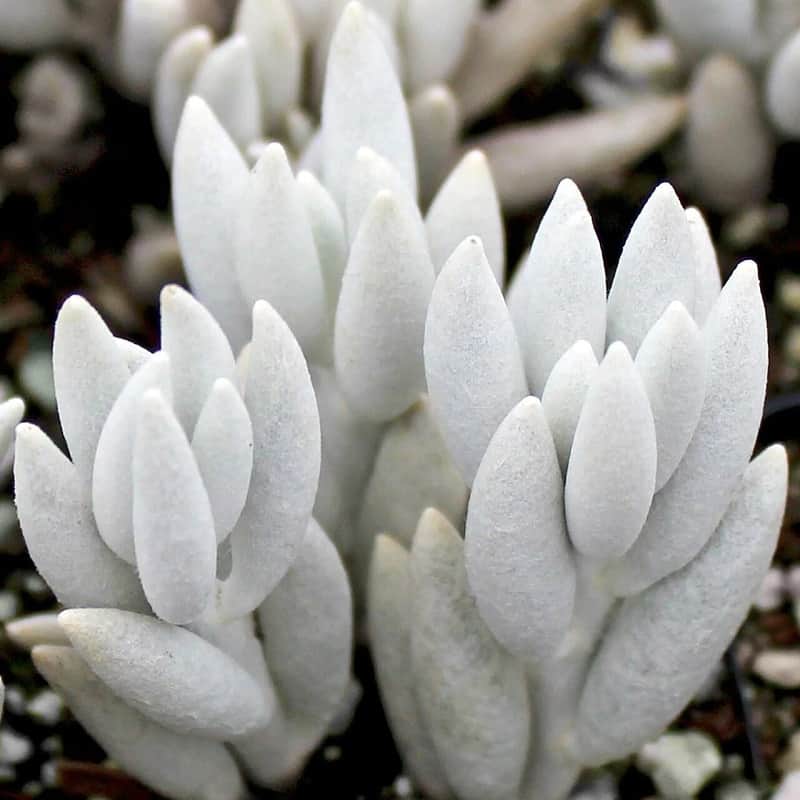Is it a cactus? Is it a succulent? This funny-looking plant is a brilliant cactus for beginners to grow. Mammillaria elongata is native to Mexico, where it thrives in the wild at an altitude of approximately 1300 to 2300 meters above sea level. If given the opportunity, it will grow to about 20 centimeters tall and can spread 30 centimeters wide.
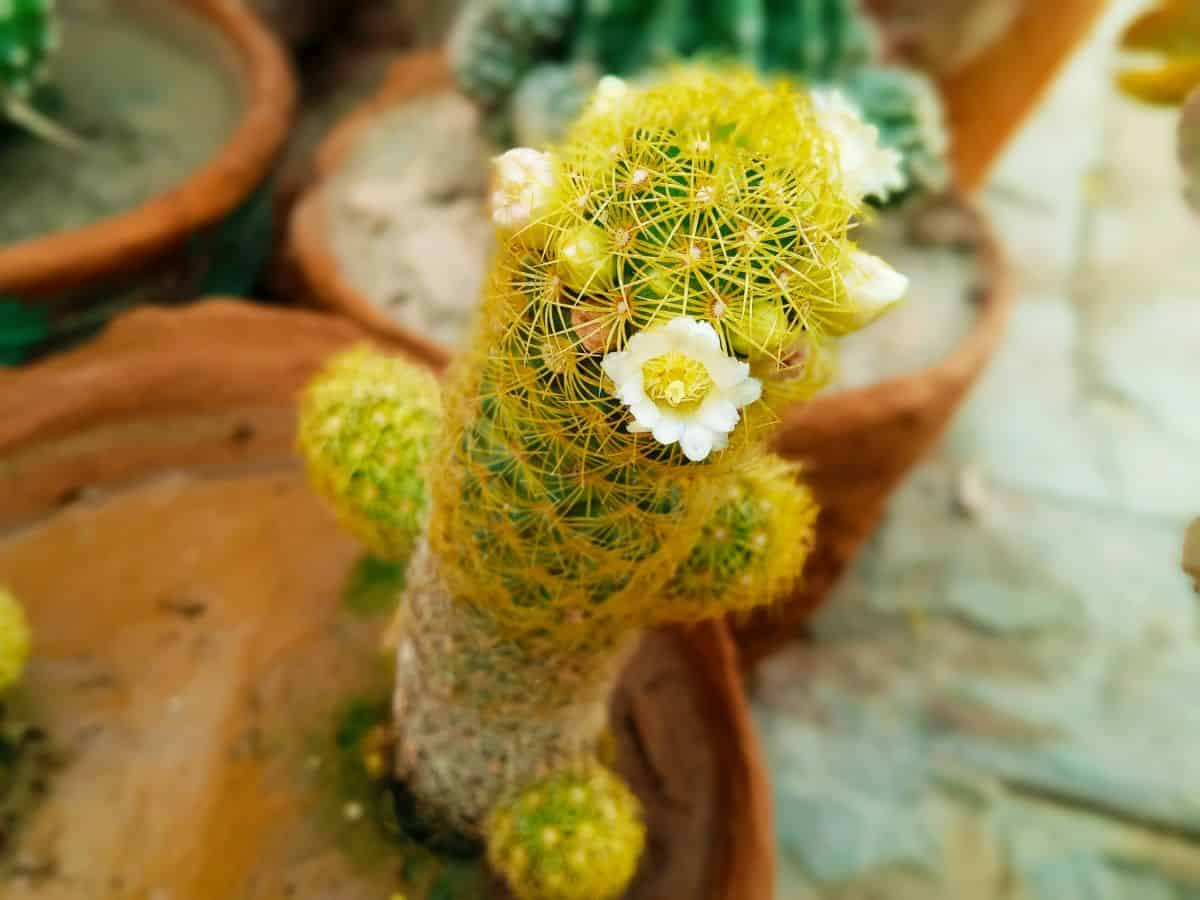
We rather like its street name, so we will refer to it as ladyfinger cactus for the purpose of this article. You will learn about its appearance and how to identify it, whether or not it has any known benefits to wildlife in your area, and if this cactus is toxic to houseplants.
Of course, we have also added a complete care guide and what to do and not to do to your plant in this article too. After reading through this information, you will be fully prepared to grow ladyfinger cactus in your home. Enjoy!
Jump to:
- Appearance
- Benefit to Wildlife
- Care guide
- Ideal Soil
- Ideal Weather Conditions
- Dormancy
- Watering
- Ideal Growing Area (if Grown Outdoors)
- Where to Plant
- Propagation
- Compatible Plants
- Sedum Adolphii AKA Golden Glow
- Mammillaria Spinosissia
- Ferocactus Latispinus AKA Devil’s Tongue Barrel Cactus
- Ashweed
- Toxicity to Animals
- Do’s
- Dont’s
- Common cactus mistakes
- FAQ
Appearance
| Name: | Mammillaria Elongata |
| Soil: | Well-drained sandy soil |
| Blooming: | Mid-winter to late spring. |
| Light: | Minimum of 6 hours of sunlight per day |
| Water: | When the soil is completely dry |
| Propagation: | Stem cuttings |
Cacti and succulents are often various shades of greed; however, this cactus has yellow and brown spines which makes it look sunkissed and golden. It blooms light yellow or pink flowers that look super exotic and very pleasing to the eye during the spring.
Benefit to Wildlife
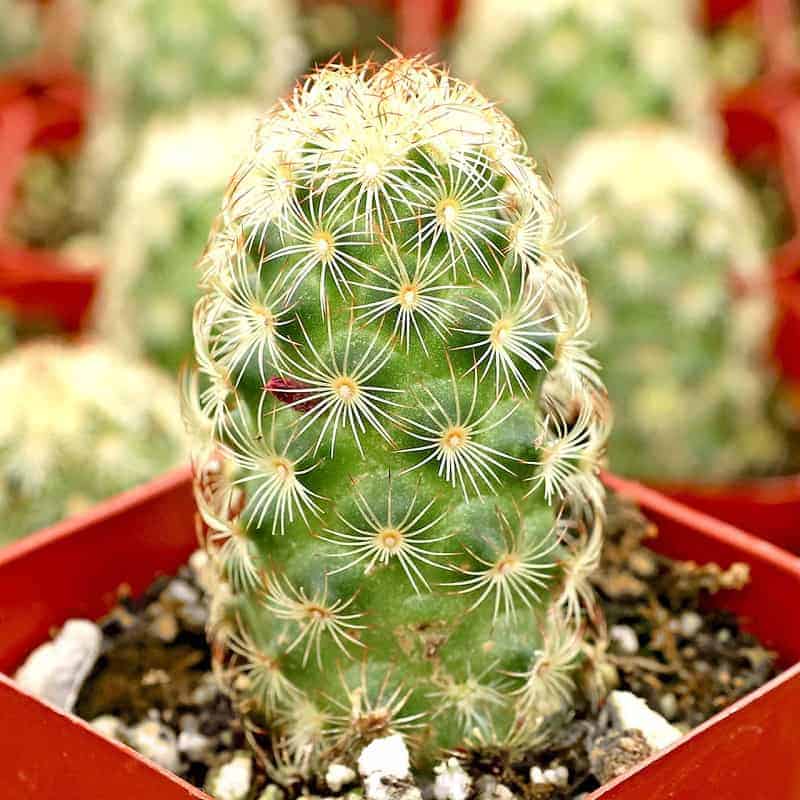
Ladyfinger cacti don’t have any known benefit to wildlife. This might be due to their stand-offish spikes and laid back nature. Mammillaria elongata keep to themselves in the wild, and they certainly do the same in your garden.
Care guide
Growing ladyfinger succulents is very easy. They don’t need very much tender loving care as they are used to growing in very harsh conditions. These plants have evolved to become very heat tolerant plants and, therefore, need little water to survive - but we will get to that shortly.
Follow the instructions and advice in this care guide to ensure your ladyfinger cactus survives and grows to its full potential:
Ideal Soil
Plant this succulent in well-drained sandy soil. One of the biggest mistakes people make when growing succulents and cacti is that they pot their plant in store-bought potting soil that is inappropriate for cacti.
To avoid making this mistake, purchase cacti potting soil that does not contain fertilizers and pot your ladyfinger cactus using in that soil. If you bought your cactus from a garden center, we recommend re-potting it in an appropriate soil of your choice as often the soil that is already in the cactus pot isn’t ideal for it.
You should also put your plant in a pot with extremely good drainage. This is to ensure that excess water drains out of the pot and does not suffocate your plant. Ladyfinger cacti are prone to root rot as a result of being planted in a pot without sufficient drainage.
Top Tip: if the pot you bought does not have enough drainage holes, you can drill some yourself!
Ideal Weather Conditions
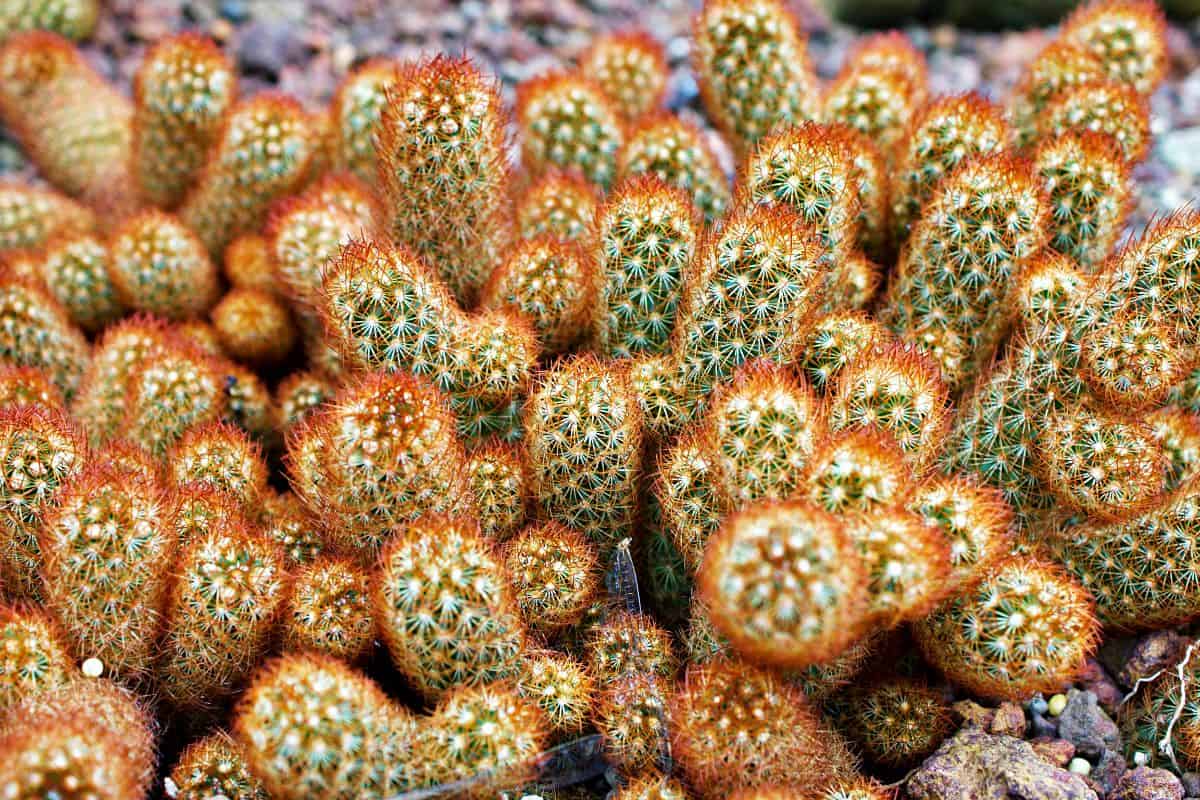
Ladyfinger cacti are not cold hardy. If their water reserves freeze over, they can burst or split open, leaving permanent scars on your plant. These cacti need at least four to six hours of sunlight to thrive and to grow in an area that isn’t overly windy, and the temperature doesn’t drop below -6 degrees Celsius.
Dormancy
No products found.
Winter dormant plants such as ladyfinger cacti do not grow over the cold winter months. You might be thinking, why is this important? Well, this all comes down to how much you need to water the plant. It will need little to no water during its dormant months as you will find out in the section below.
Watering
You should follow the typical watering methods for all succulent and cacti plants. The ‘soak and dry’ method works the best as this ensures you never overwater them.
Do not follow a daily watering routine as you would for other garden and house plants, as ladyfingers certainly won’t need watering on a daily basis. Instead, touch and check the soil every morning; if the soil is damp, you must not water the plant, if the soil is completely dry, you can water it.
You could find yourself watering your plant weekly in the summer and then not watering it for a month or so over the winter. This is completely normal! Ladyfinger cacti are dormant over the winter months and need less water, attention, and care during their dormant phase.
Ideal Growing Area (if Grown Outdoors)
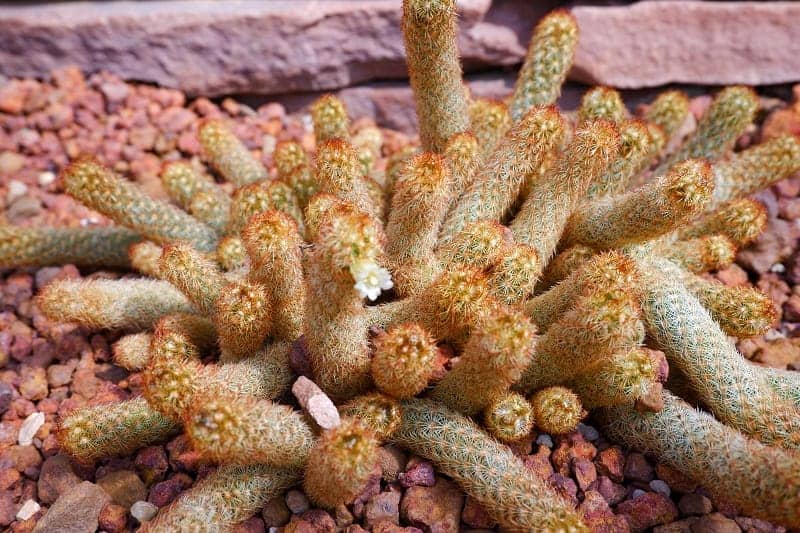
Ideally, if you plan on growing your plant outside, it should be grown in areas within the hardiness zone 9a or similar regions in the world. There are ways around this. You could always plant your cactus in a container and move it inside during cold or rainy weather.
Where to Plant
Ladyfinger cacti grow to their full potential when they are planted indoors. They make brilliant houseplants, and they look phenomenal in any home! Keeping your plant in a controlled environment protects it from unexpected weather; plus, it makes your house feel very homely!
Propagation
Propagate your plant from offsets by taking small cuttings and replanting them. Be very careful when taking cuttings not to damage the plant or prick yourself in the process. Here is how to do it:
- Use tongs to pull at its cylindrical stem very gently.
- Using a knife, gently cut a small ‘ladyfinger’ from the rest of the plant.
- The end of the stem will need to callous for a number of days.
- Once you feel the clipping is ready, plant it in well-drained soil.
Compatible Plants
Other cacti and succulent plants are great companions for ladyfinger plants. We have a few suggestions for you if you find the abundance of choice overwhelming.
Sedum Adolphii AKA Golden Glow
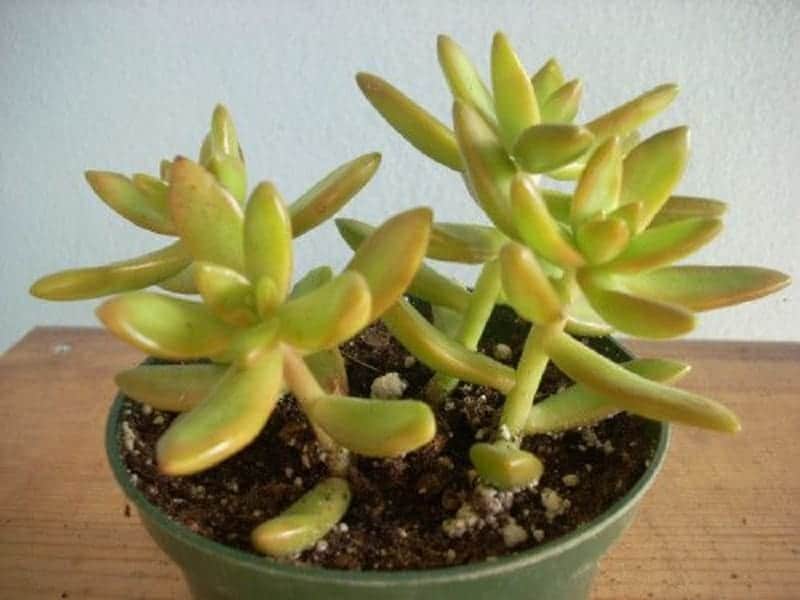
This is a succulent plant that forms beautiful rosettes that turn red at the tips. Not only do they look great next to ladyfinger cacti, but they also have very similar care requirements.
Mammillaria Spinosissia
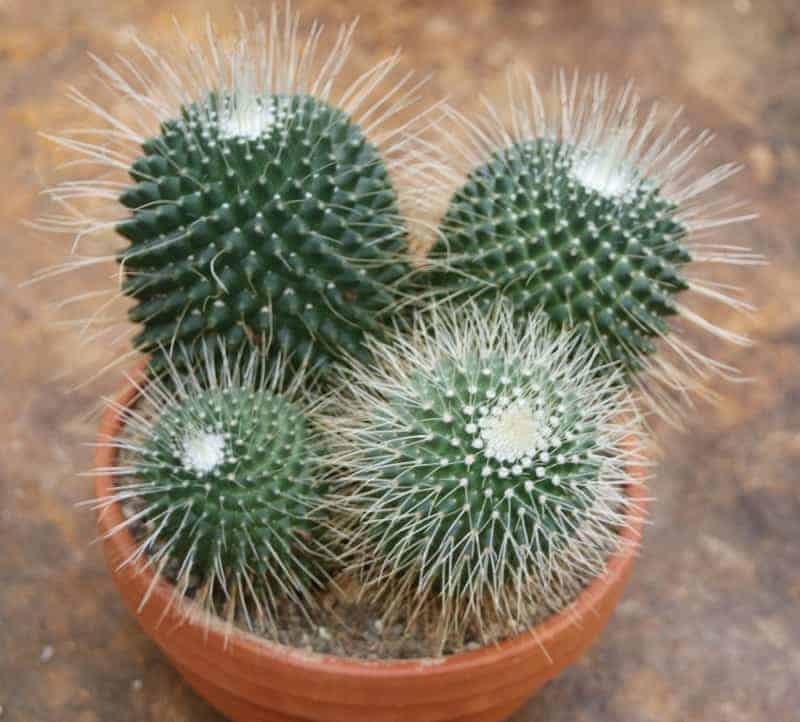
This spiny cactus is native to Central America and Mexico, much like our ladyfinger cactus. These cacti plants grow in clusters and form spherical steam that blooms beautiful flowers.
See Related Article: Sempervivum Arachnoideum AKA Cobweb Houseleek: Complete Care Guide
Ferocactus Latispinus AKA Devil’s Tongue Barrel Cactus
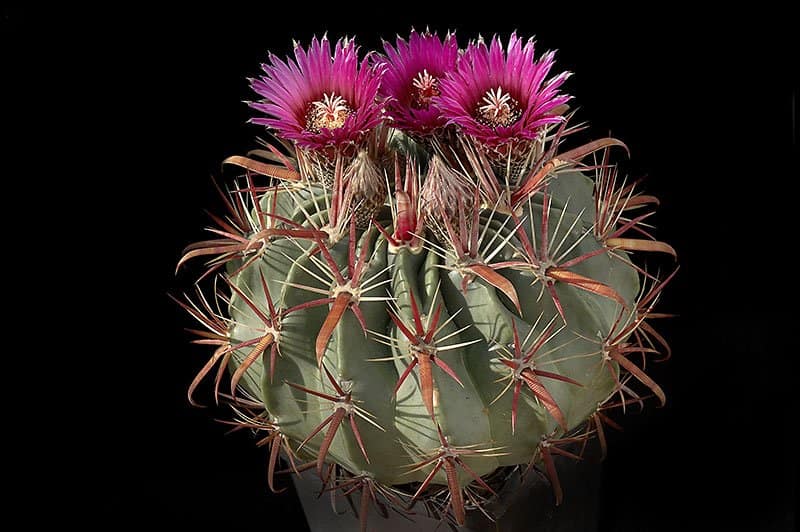
The devil’s tongue barrel cactus is an evergreen plant. This plant flowers in the winter and has red, pink, or white spines that curve outward as they grow. Their flowers are purple and yellow in color and are funnel-shaped.
Ashweed
This succulent sure does suit its name of ashweed. It is extremely drought-tolerant, which means that you will need to be especially careful when watering this plant. It is a low growing succulent, and its leaves are completely covered in fine silver hairs.
A combination of succulents and cacti looks spectacular around your home. In fact, many home decorators and designers choose succulents and cacti as their houseplant of choice!
Toxicity to Animals
Most cacti are not toxic to animals, and fortunately, the ladyfinger cactus is one of them. You do not have to worry about this plant making your cat or dog unwell, and you should grow it freely in your home with peace of mind.
Do’s
Here is a summary of what to do with your ladyfinger cactus to ensure it grows to its full potential:
- Always water it whenever the soil is completely dry. Get into the habit of checking the soil on a daily basis as it is very easy to forget about your cactus plant otherwise.
- Ensure your cactus gets at least four hours of sunlight every day. Six hours of sunlight is ideal for this plant, so if you have a nice sunny spot in your house or garden, plant your cactus there.
- You can use special cactus fertilizer to give your ladyfingers a much-needed nutrients boost. Ladyfinger succulents will only need to be fertilized in the hot summer months, and just a tiny amount of fertilizer will be needed.
- Propagate your plant! This is a really fun process and one that takes a lot of trial and error. Give the propagated plant to a friend or family member once it is established!
- Always bring your cactus inside when the weather gets a little rough so that it doesn’t get damaged or die in harsh weather conditions.
Dont’s
Here is a reminder of what not to do when caring for your ladyfinger cactus:
- Never water your plant when its soil is wet or damp to avoid drowning it or causing root rot.
- Do not place your plant in a shady area of the garden or home, even if it looks amazing there! Cacti need plenty of sunlight as these sure are sun-worshiping plants!
- Do not pot your cactus in pre fertilized potting soil, even if the soil is ideal for cacti. You should always add a liquid fertilizer separately so that you know your cactus is getting the right amount of fertilizer for its size and plant type. Fertilizer can be very toxic to plants if it is dispensed in the wrong quantity or given to your plant during the wrong time of the year.
- Don’t be afraid to propagate your plant! It is a brilliant activity for the whole family to get involved in.
- Never propagate an immature plant as you could cause it irreversible damage.
- Try not to forget about your plant. We know this is actually harder than it sounds due to their low-maintenance nature.
Common cactus mistakes
Here is an overview of some common cactus growing mistakes:
- Overwatering your cactus is the number one cactus killing mistake that gardeners make.
- Not protecting cacti from extreme cold weather conditions.
- Assuming that cacti need to be in extreme heat and direct sunlight for the majority of the day. This is not true and can actually damage and burn your plant!
- Planting cacti in inappropriate soil. You should always plant cacti in well-drained sandy soil with a rocky soil topper.
- Planting cacti directly in the ground is a big mistake. When you do this, you lose the ability to move your plant inside for protection.
- Using inappropriate fertilizers is another big cactus growing mistake.
You May Also Like: Graptosedum AKA California Sunset Succulents - A Comprehensive Guide
FAQ
Let’s answer some prickly cactus questions. This is a collection of frequently asked questions and answers that many budding cactus growers ask along the way.
Q: Are cacti succulents?
A: Cacti are a type of succulent plant that retains water; however, they look different and protect their water storage with spikes and spines. Just because cacti are a type of succulent does not mean that succulents are a type of cacti, so do not get this confused!
Q: Can cacti die?
A: Yes, they can! Like any other type of plant, if they are not cared for correctly, they will die. Fortunately, cacti are tolerant plants that can survive extreme neglect, so if you are a known plant neglecter, this might be the plant for you!
Q: Can cacti grow in the shade?
A: The short answer to this question is no, they cant, but it is a little more complicated than that. Cacti will grow in partial shade or in an area that is shaded for a few hours every day. In general, cacti need at least six hours of sunlight every day, so think about where you plant them very carefully!
Q: Can you grow cacti only in the sand?
A: This is not a good idea. Cacti grow in a sandy soil mixture in the wild, so planting them in the sand will not be the best option for them.
Q: Do cacti get sun burnet?
A: Cacti can get sunburnt, which is why moving them out of direct sunlight on a hot summer day is vital.
Q: What is inside a cactus?
A: inside the fleshy stem of a cactus, you will find a spongy fleshy collection of water. This is the cacti’s water storage that has evolved over hundreds of years to get the plant through droughts and hot summers.


